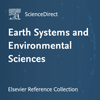View Item
- xmlui.general.dspace_homeCentros Regionales y EEAsCentro Regional Patagonia NorteEEA BarilochePartes de librosxmlui.ArtifactBrowser.ItemViewer.trail
- DSpace Home
- Centros Regionales y EEAs
- Centro Regional Patagonia Norte
- EEA Bariloche
- Partes de libros
- View Item
Genetic Resources: The Base Material for Managing Nature
Abstract
Genetic resources from any biological organism-complete genomes, genes, or even portions of genes that have actual or potential relevance to humans—are a provisioning ecosystem service. They are essential to ensure the resilience and persistence of ecosystems and the process of evolution, and in this sense, conserving them is an ethical duty. Moreover, they are crucial to domesticate or improve species used in the production of food, fiber and drugs, and
[ver mas...]
Genetic resources from any biological organism-complete genomes, genes, or even portions of genes that have actual or potential relevance to humans—are a provisioning ecosystem service. They are essential to ensure the resilience and persistence of ecosystems and the process of evolution, and in this sense, conserving them is an ethical duty. Moreover, they are crucial to domesticate or improve species used in the production of food, fiber and drugs, and in many other processes for the benefit of humankind. On the other hand, genetic resources are threatened by natural and human-induced factors, which can be gradual (e.g., climate change) or sudden (e.g., fire). Overexploitation, land use change, alien species invasion, pollution, and fragmentation are among the main drivers of genetic resource loss. Genetic resources can be conserved either in situ (in natural ecosystems) or ex situ (in artificial environments). Seed banks are the most widespread ex situ conservation strategy, but alternatives such as pollen banks, in vitro conservation, cryopreservation, DNA storage, microorganism culture collections, and field gene banks are also used. Genetic markers and common garden trials are the proper tools to characterize and evaluate genetic resources.
[Cerrar]

Fuente
Earth Systems and Environmental Sciences. Elsevier, 2021
Date
2021
Editorial
Elsevier
ISBN
978-0-12-409548-9
Formato
pdf
Tipo de documento
parte de libro
Palabras Claves
Derechos de acceso
Restringido
 Excepto donde se diga explicitamente, este item se publica bajo la siguiente descripción: Creative Commons Attribution-NonCommercial-ShareAlike 2.5 Unported (CC BY-NC-SA 2.5)
Excepto donde se diga explicitamente, este item se publica bajo la siguiente descripción: Creative Commons Attribution-NonCommercial-ShareAlike 2.5 Unported (CC BY-NC-SA 2.5)

